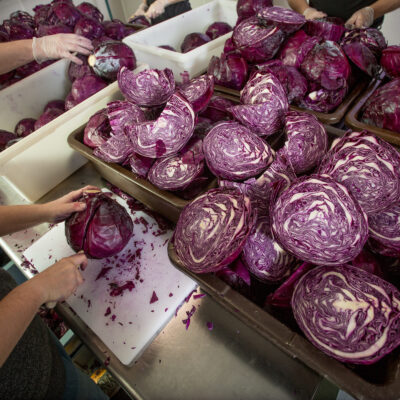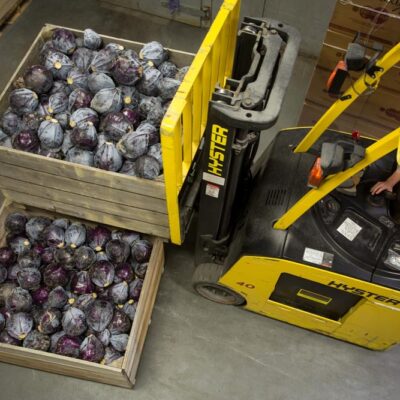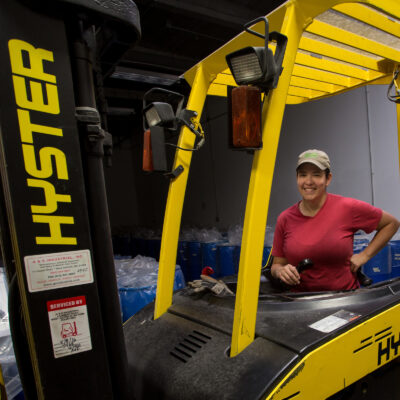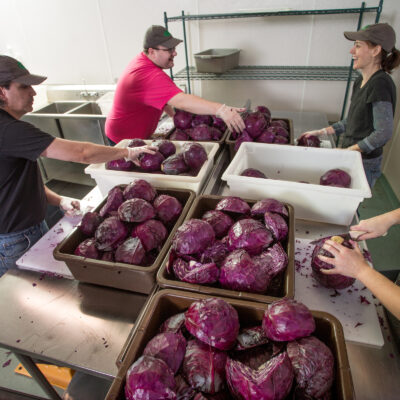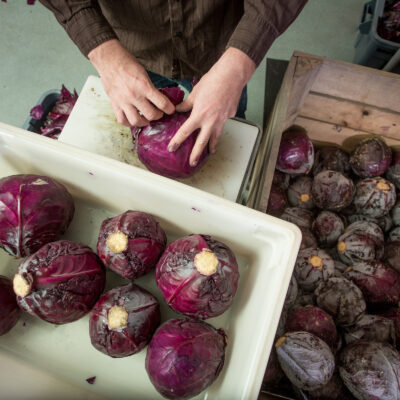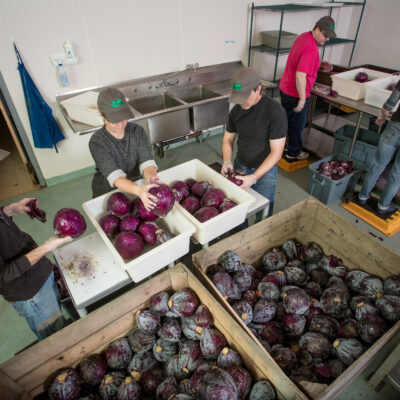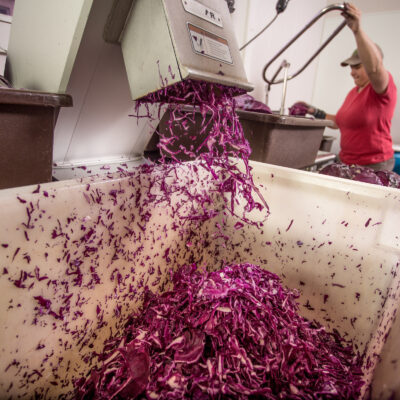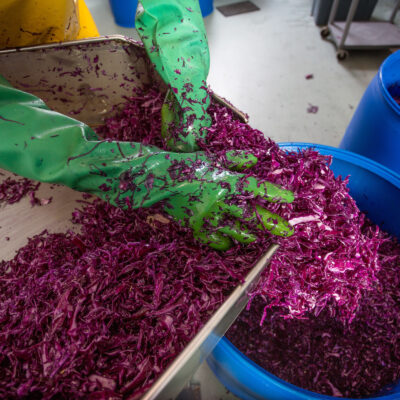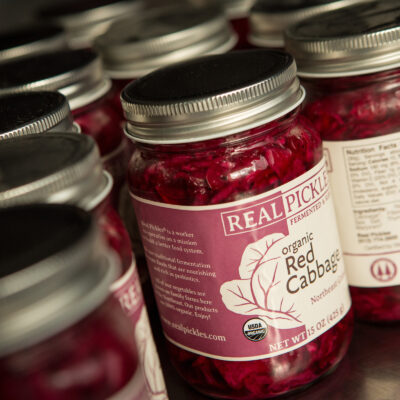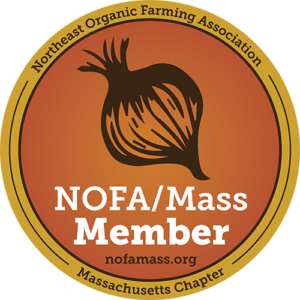We use lactic acid fermentation to make our Real Pickles products (also known as lacto-fermentation or natural fermentation). It is the original pickling method and has been an essential part of healthy human diets throughout the world for thousands of years. In Asia, consumption of fermented pickles dates back at least to the 3rd Century B.C.E., when the Great Wall of China was under construction. In Europe, sauerkraut is known to have been an important food among the ancient Romans.
Today, Real Pickles is one of a growing number of businesses in the United States producing raw (unpasteurized) and fermented pickles, sauerkraut, kimchi, and other vegetables. This traditional pickling process went out of favor with the advent of industrial food production. Modern pickling methods, including use of vinegar (usually in place of fermentation) and pasteurization, produce a uniform, shelf stable product suitable to the needs of the large food corporations. Unfortunately, modern pickles do not offer the authentic flavor or health-promoting qualities of traditional pickles.
How it works
Many studies show that including raw fermented foods in our diet can improve health from gut to brain.
Read more about Health Benefits
Lactic acid fermentation relies on beneficial cultures – similar to those used to make yogurt or sourdough bread – to break down natural sugars in the vegetables and produce a variety of healthful substances, including lactic acid.
The process begins with fresh, nutrient-rich vegetables, naturally bearing lactic acid cultures on their surfaces (making starter cultures or inoculants unnecessary). This ‘wild fermentation’ points to the importance of healthy soils and organic farm practices, ensuring that the vegetable microbiome can support a robust fermentation (see this partnership with UMass researchers). The produce is washed, chopped or sliced as needed, and mixed with sea salt. The salt acts to draw out juices, preserve the vegetables while the fermentation gets started, and regulate the fermentation process itself. The mixture is packed into air-tight fermentation vessels (jars, crocks, or barrels) and placed in a warm spot (65-80 deg F).
Check out our “Ferment Your Own Vegetables” blog series!
Part 1: Introduction to Fermentation
Part 2: Developing Your Own Fermentation Recipes
Cucumbers undergo a relatively short fermentation, while cabbages may take several months to yield finished sauerkraut. During this time, cultures transform the fresh vegetables into pickles by converting sugars to lactic acid, acetic acid, carbon dioxide, and other beneficial substances. It is the lactic acid that is primarily responsible for preserving the vegetables, as well as creating the wonderful flavor and aroma of traditional pickles.
Length of fermentation depends on many factors, including temperature, moisture of the raw vegetable, amount of salt used, and thickness of the cut. We taste every batch during fermentation to determine when it tastes just right! Once finished, the ferments are stored under refrigeration to slow the fermentation, where they will remain preserved for two years or more.
